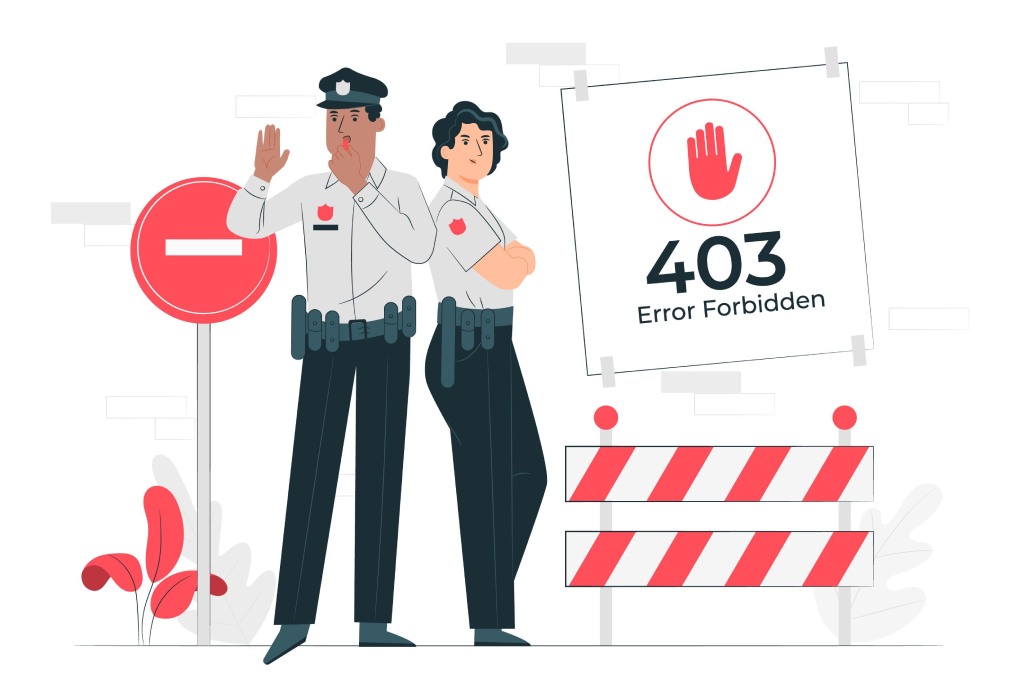Error 403: What Is It And How To Solve It

You have just changed your website, or simply a plugin has been updated, and suddenly the dreaded ‘Error 403 Forbidden’ appears. It is a reasonably standard error, and, as with other errors that you may find on your website, it has a solution, depending on the cause. In this post, we talk about this error, what it is, why it occurs and how to solve it.
Table of Contents
Error 403: What Is It
This is an HTTP status code that shows a user or client-side error. We usually differentiate between two types of errors on a website, errors that begin with 4xx, such as 404 or 403, which are errors by the client that can usually be solved easily by the user, and errors 500, which are errors by the hosting or server, and were usually to be able to solve them, and you must contact your hosting.
The 403 error is the one that indicates that you do not have permission to access a specific directory on your website, and therefore entry is not allowed. Usually, the server shows it when, after a user requests to access a particular page or area of the web, it considers that the request is wrong and therefore prohibits the visitor from entering. When the user tries to access a URL affected by a 403 error, they will receive a note indicating that they do not have permission to access it.
Common Causes And Solutions Of Error 403
Different common causes of the 403 error can be identified, and depending on the reason, other solutions can be found to try to reverse the 403 error. Among the possible causes, the most common are the following.
See If You’re Accessing An Invalid URL
The first thing to check is whether the entered URL is correct and does not contain any private errors. This error can also appear when you try to access a hidden file such as .htaccess from the browser. In this sense, the website developer may have configured the permissions not to access that URL.
Therefore, when faced with a 403 error, check that the URL you have entered is correct. If it is accurate and the error persists, let’s see other possible causes.
Misconfiguration In .htaccess
One of the common causes of the 403 error is usually an incorrect configuration of the .htaccess File. It usually happens after some change, and the simplest solution is to regenerate the .htaccess File and upload it to your website.
In many cases, the .htaccess File may be hidden within your website. In the Axarnet File Manager, you find it in the httpdocs directory. The .htaccess File is a server configuration file, and if your website does not have it, or if you have deleted it by mistake, you must create a new one.
To check if it is the .htaccess File that is causing the 403 error, you will have to download the file to your PC to have a backup copy of it. After making a backup of this File, we will delete it from the file manager of the httpdocs folder by clicking on the File and pressing the delete button. Try to access the URL that gave you the 403 error, and if you continue to see the error, it is not being caused by the .htaccess File. In case you can access it, the .htaccess File contained some errors. Generate a new one, and the error will be solved.
The Index Page Is Missing
Another possible cause of a 403 error is that there is no main page of your website index.html or index.php. You can check it in the File Manager at httpdocs and see if it is named that way. If it isn’t called something else, the easiest solution is to rename the File and name it with that specific title.
Check If Any WordPress Security Plugin Is Misconfigured
If you work with WordPress, one of the common reasons for causing the 403 error is that a plugin has been corrupted. To see if this is the cause, the best thing you can do is deactivate the plugins that you have active on your website. Through the File Manager, we access the httpdocs> wp-content> plugin> folder and temporarily change its name.
Try to access the URL that previously caused the error. If it lets you enter, the cause is in a plugin. To see which one is causing the problem, reaccess your File Manager and disable plugin by plugin. When you find the one causing the error, leave it disabled or try updating to the latest version.
Problem With The Permissions Of Your Files Or Folders
A probable cause of the 403 error is also usually in the File and directory permissions of your folders. Permissions tell us what can be read, written, and executed. To change permissions, you will need to access your site via FTP. Once connected, right-click on the httpdocs folder and click on File Attributes. In the numeric value, the field enters 755 and selects Apply to directories only. Usually, the numerical values are 755 for folders and 644 for files.
Also Read: Error 500: What Is It And How To Solve It?
conclusion
A 403 error is one of the common errors that you will find throughout the life of your website. Other common ones are the 404 error or a 504 error. The leading causes of a 403 error are usually a misconfiguration of the .htaccess, a WordPress plugin error, or a misconfiguration of File permissions.







